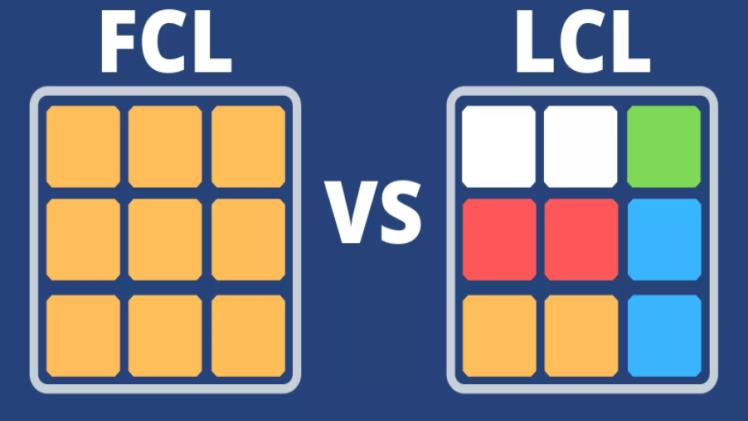When choosing between FCL (full container load) and LCL (less than container load) shipment for your goods, consider the advantages and risks to determine which will be best suited to your shipping needs.
What is FCL Shipping?
FCL shipping is when you use an entire container to ship your cargo, as opposed to LCL shipping, where your cargo is shipped alongside other consignments in the same container (more on that later).
With FCL, you have complete control over your shipment as your goods will be the only ones present in the sealed container. One of the main advantages of FCL is that it generally takes less time than LCL, as your cargo doesn’t need to be transferred between containers at any point.
What is LCL Shipping?
LCL shipping is when your cargo is shipped alongside other consignments in the same container, as opposed to FCL shipping, where you use an entire container for your cargo (more on that later).
With LCL, you don’t have complete control over your shipment as the freight forwarder will be responsible for packing and unpacking it alongside other peoples’ partial loads. They will also need to load and unload the container onto the vessel or truck.
One of the main advantages of LCL is that it can be cheaper than FCL, as you only pay for the physical space that your cargo occupies in the container. Another advantage is that it can be less logistically complicated as you don’t need to arrange for the container to be delivered to your premises.
The downside of LCL is that it can take longer than FCL as your cargo may need to be transferred between containers at various points along the route. There is also a greater risk of damage or loss as your cargo is not shipped in a dedicated container.
FCL vs LCL: Key Differences
Here we will explore the key differences between the two methods to help you make an informed decision.
Shipping Volume
One of the main differences between FCL and LCL is the shipping volume. FCL is suitable for large cargo volumes, whereas LCL is more suited for smaller shipments because, with FCL, you have use of an entire container, meaning that you can fill it with as much cargo as you like. With LCL, the shipping company will ship your cargo alongside other consignments in the same container, so you will have to share space.
Packing and Unpacking
Another critical difference between FCL and LCL is the packing and unpacking process. With FCL, your goods will be processed alone with a single container. LCL will involve the subdivision and repacking of the container with additional goods from other customers. Depending on the goods in question this may or may not be an issue.
Cost
The cost of shipping via FCL or LCL can also vary. Generally speaking, FCL is more expensive than LCL because you are paying for an entire container, even if you don’t use all of the space. LCL is usually cheaper as you are only paying for your cargo’s space in the container. However, this can vary depending on the route and the freight forwarder, so it’s always best to get a cost estimate from a few different companies before deciding.
Transit time
The transit time for FCL and LCL can also differ. FCL is generally quicker as your cargo will not need to be unloaded and reloaded during the journey. LCL can sometimes take longer as your cargo may need to be transferred between containers at various routes. Again, this will vary depending on the route and freight forwarder, so it’s always best to check in advance.
The Woodland shoe line is made from a wide variety of materials, including leather, canvas, nubuck, suede, and mesh. If you’re on a budget, be sure to try a pair of woodland shoes at Paytm Mall. If they don’t fit, you can return them for a refund within a week.
Conclusion
In shipping, there is no easy or correct answer as to whether FCL or LCL shipping is the best option, and it will depend on several factors, such as the nature of your cargo, the cost, the transit time and the logistics involved. Ultimately, it’s crucial to weigh up all of these factors before deciding.

